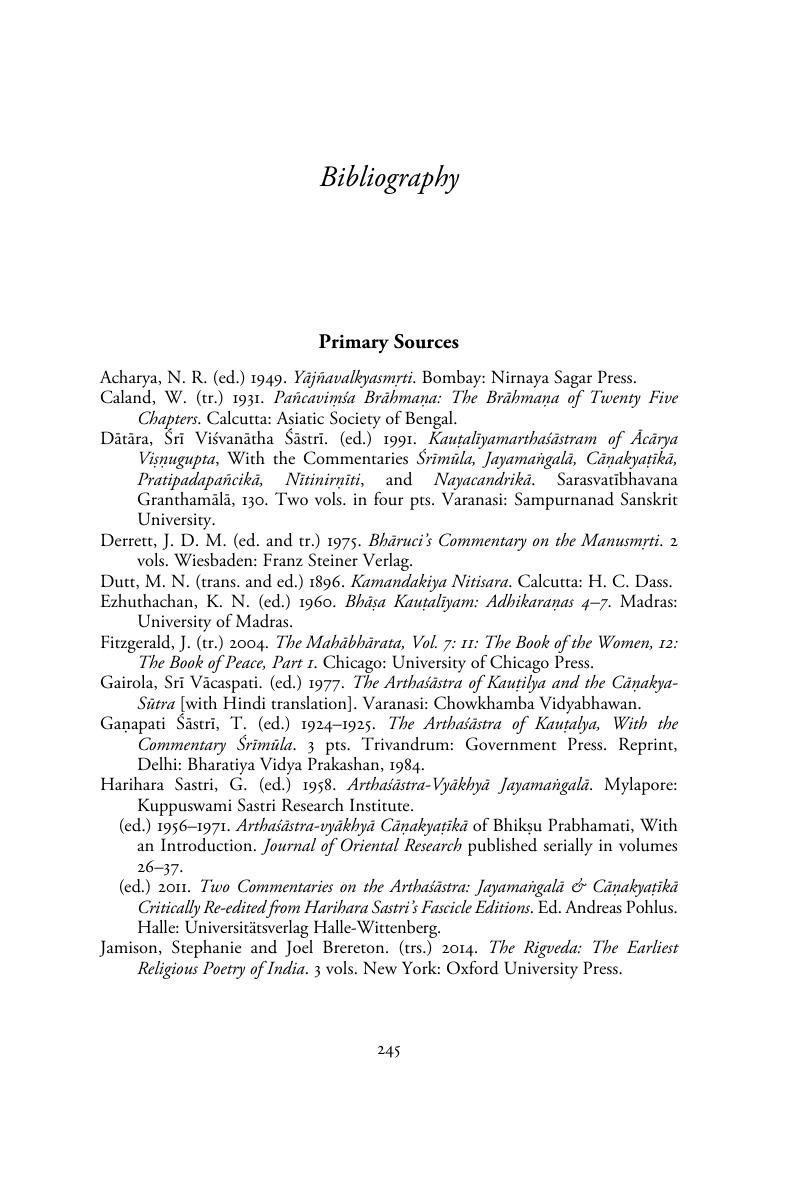Book contents
- The History of the Arthaśāstra
- Ideas in Context
- The History of the Arthaśāstra
- Copyright page
- Dedication
- Contents
- Figures and Tables
- Preface and Acknowledgments
- Note on the Text
- Abbreviations
- Chapter 1 Introduction
- Chapter 2 Arthaśāstra Historiography
- Chapter 3 The Resegmentation of the Arthaśāstra
- Chapter 4 Citation and Attribution
- Chapter 5 The Deep Structure of the Text
- Chapter 6 The History of the Arthaśāstra
- Chapter 7 The Politics of the Daṇḍanīti
- Chapter 8 Varṇadharma in the Arthaśāstra
- Chapter 9 Statecraft, Law, and Religion in Ancient India
- Appendix I Other Theories of Composition
- Appendix II Chapter Colophons
- Appendix III End Verses at Variance with Preceding Prose
- Appendix IV Possible Integration between Prose and End Verses
- Appendix V Proposed Interpolations at the End of Chapters
- Appendix VI Possible Instances of Unattributed Citation
- Appendix VII Proposed Interpolations Depending on Citations
- Appendix VIII Other Proposed Interpolations
- Appendix IX Manu’s Seventh Chapter and the Daṇḍanīti
- Appendix X Brāhmaṇical Privileges
- Bibliography
- Index Locorum
- Index
- Ideas in Context
- References
Bibliography
Published online by Cambridge University Press: 28 June 2019
- The History of the Arthaśāstra
- Ideas in Context
- The History of the Arthaśāstra
- Copyright page
- Dedication
- Contents
- Figures and Tables
- Preface and Acknowledgments
- Note on the Text
- Abbreviations
- Chapter 1 Introduction
- Chapter 2 Arthaśāstra Historiography
- Chapter 3 The Resegmentation of the Arthaśāstra
- Chapter 4 Citation and Attribution
- Chapter 5 The Deep Structure of the Text
- Chapter 6 The History of the Arthaśāstra
- Chapter 7 The Politics of the Daṇḍanīti
- Chapter 8 Varṇadharma in the Arthaśāstra
- Chapter 9 Statecraft, Law, and Religion in Ancient India
- Appendix I Other Theories of Composition
- Appendix II Chapter Colophons
- Appendix III End Verses at Variance with Preceding Prose
- Appendix IV Possible Integration between Prose and End Verses
- Appendix V Proposed Interpolations at the End of Chapters
- Appendix VI Possible Instances of Unattributed Citation
- Appendix VII Proposed Interpolations Depending on Citations
- Appendix VIII Other Proposed Interpolations
- Appendix IX Manu’s Seventh Chapter and the Daṇḍanīti
- Appendix X Brāhmaṇical Privileges
- Bibliography
- Index Locorum
- Index
- Ideas in Context
- References
Summary

- Type
- Chapter
- Information
- The History of the ArthasastraSovereignty and Sacred Law in Ancient India, pp. 245 - 255Publisher: Cambridge University PressPrint publication year: 2019



